1. Dispenzieri A. POEMS syndrome: 2011 update on diagnosis, risk-stratification, and management. Am J Hematol. 2011; 86:591–601. PMID:
21681783.

2. Dispenzieri A. POEMS syndrome. Blood Rev. 2007; 21:285–299. PMID:
17850941.

3. Dispenzieri A, Gertz MA. Treatment of POEMS syndrome. Curr Treat Options Oncol. 2004; 5:249–257. PMID:
15115653.

4. Kimyagarov S, Klid R, Fleissig Y, Kopel B, Arad M, Adunsky A. Skeletal muscle mass abnormalities are associated with survival rates of institutionalized elderly nursing home residents. J Nutr Health Aging. 2012; 16:432–436. PMID:
22555785.

5. Dispenzieri A, Kyle RA, Lacy MQ, et al. POEMS syndrome: definitions and long-term outcome. Blood. 2003; 101:2496–2506. PMID:
12456500.

6. Dispenzieri A. POEMS syndrome: update on diagnosis, risk-stratification, and management. Am J Hematol. 2012; 87:804–814. PMID:
22806697.

7. Kelly JJ Jr, Kyle RA, Miles JM, Dyck PJ. Osteosclerotic myeloma and peripheral neuropathy. Neurology. 1983; 33:202–210. PMID:
6296727.

8. Nasu S, Misawa S, Sekiguchi Y, et al. Different neurological and physiological profiles in POEMS syndrome and chronic inflammatory demyelinating polyneuropathy. J Neurol Neurosurg Psychiatry. 2012; 83:476–479. PMID:
22338030.

9. Koike H, Iijima M, Mori K, et al. Neuropathic pain correlates with myelinated fibre loss and cytokine profile in POEMS syndrome. J Neurol Neurosurg Psychiatry. 2008; 79:1171–1179. PMID:
18356256.

10. Bang SM, Cho EK, Suh C, et al. High dose therapy followed by autologous peripheral blood stem cell transplantation as a first line treatment for multiple myeloma: a Korean Multicenter Study. J Korean Med Sci. 2003; 18:673–678. PMID:
14555819.

11. Lee JL, Kim SB, Lee GW, et al. The efficacy of high-dose melphalan with autologous peripheral blood stem cell transplantation in patients with multiple myeloma. Yonsei Med J. 2003; 44:800–810. PMID:
14584095.

12. Sohn BS, Yoon DH, Kim S, et al. The role of prophylactic antimicrobials during autologous stem cell transplantation: a single-center experience. Eur J Clin Microbiol Infect Dis. 2012; 31:1653–1661. PMID:
22138805.

13. D'Souza A, Lacy M, Gertz M, et al. Long-term outcomes after autologous stem cell transplantation for patients with POEMS syndrome (osteosclerotic myeloma): a single-center experience. Blood. 2012; 120:56–62. PMID:
22611150.
14. Jimenez-Zepeda VH, Trudel S, Reece DE, Chen C, Rabea AM, Kukreti V. Cyclophosphamide and prednisone induction followed by cyclophosphamide mobilization effectively decreases the incidence of engraftment syndrome in patients with POEMS syndrome who undergo stem cell transplantation. Am J Hematol. 2011; 86:873–875. PMID:
21815185.

15. Li J, Zhou DB. New advances in the diagnosis and treatment of POEMS syndrome. Br J Haematol. 2013; 161:303–315. PMID:
23398538.

16. Dispenzieri A, Lacy MQ, Hayman SR, et al. Peripheral blood stem cell transplant for POEMS syndrome is associated with high rates of engraftment syndrome. Eur J Haematol. 2008; 80:397–406. PMID:
18221391.

17. Thoennissen GB, Thoennissen NH, Fritz F, et al. POEMS syndrome treated with melphalan high-dose therapy and autologous blood stem cell transplantation: a single-institution experience. Ann Hematol. 2012; 91:1419–1425. PMID:
22543828.

18. Dispenzieri A, Moreno-Aspitia A, Suarez GA, et al. Peripheral blood stem cell transplantation in 16 patients with POEMS syndrome, and a review of the literature. Blood. 2004; 104:3400–3407. PMID:
15280195.

19. Rovira M, Carreras E, Blade J, et al. Dramatic improvement of POEMS syndrome following autologous haematopoietic cell transplantation. Br J Haematol. 2001; 115:373–375. PMID:
11703338.

20. Jaccard A, Royer B, Bordessoule D, Brouet JC, Fermand JP. High-dose therapy and autologous blood stem cell transplantation in POEMS syndrome. Blood. 2002; 99:3057–3059. PMID:
11929800.

21. Soubrier M, Ruivard M, Dubost JJ, Sauvezie B, Philippe P. Successful use of autologous bone marrow transplantation in treating a patient with POEMS syndrome. Bone Marrow Transplant. 2002; 30:61–62. PMID:
12105781.

22. Peggs KS, Paneesha S, Kottaridis PD, et al. Peripheral blood stem cell transplantation for POEMS syndrome. Bone Marrow Transplant. 2002; 30:401–404. PMID:
12235526.

23. Ganti AK, Pipinos I, Culcea E, Armitage JO, Tarantolo S. Successful hematopoietic stem-cell transplantation in multicentric Castleman disease complicated by POEMS syndrome. Am J Hematol. 2005; 79:206–210. PMID:
15981232.

24. Kuwabara S, Misawa S, Kanai K, et al. Autologous peripheral blood stem cell transplantation for POEMS syndrome. Neurology. 2006; 66:105–107. PMID:
16401856.

25. Laurenti L, De Matteis S, Sabatelli M, et al. Early diagnosis followed by front-line autologous peripheral blood stem cell transplantation for patients affected by POEMS syndrome. Leuk Res. 2008; 32:1309–1312. PMID:
18207237.

26. Barete S, Mouawad R, Choquet S, et al. Skin manifestations and vascular endothelial growth factor levels in POEMS syndrome: impact of autologous hematopoietic stem cell transplantation. Arch Dermatol. 2010; 146:615–623. PMID:
20566924.

27. Sanada S, Ookawara S, Karube H, et al. Marked recovery of severe renal lesions in POEMS syndrome with high-dose melphalan therapy supported by autologous blood stem cell transplantation. Am J Kidney Dis. 2006; 47:672–679. PMID:
16564945.

28. Giglia F, Chiapparini L, Fariselli L, et al. POEMS syndrome: relapse after successful autologous peripheral blood stem cell transplantation. Neuromuscul Disord. 2007; 17:980–982. PMID:
17611108.

29. Kuwabara S, Misawa S, Kanai K, et al. Neurologic improvement after peripheral blood stem cell transplantation in POEMS syndrome. Neurology. 2008; 71:1691–1695. PMID:
18832140.

30. Kang SH, Lee JY, Chun SH, et al. Bortezomib therapy followed by autologous stem cell transplantation in POEMS syndrome. Korean J Hematol. 2008; 43:145–149.


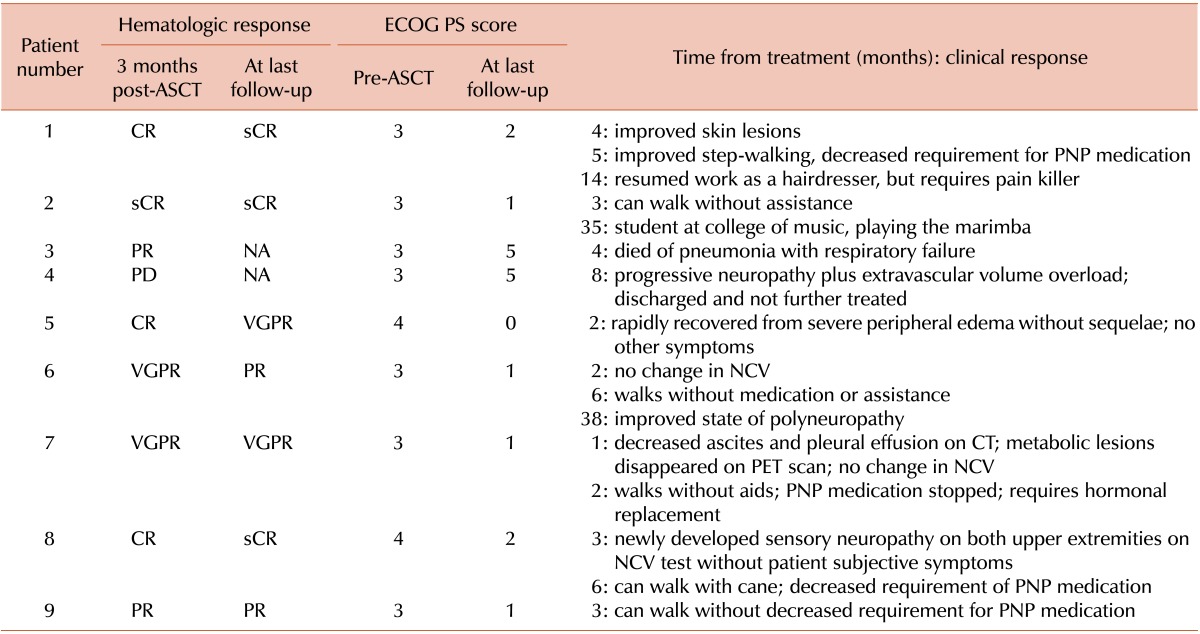




 PDF
PDF ePub
ePub Citation
Citation Print
Print


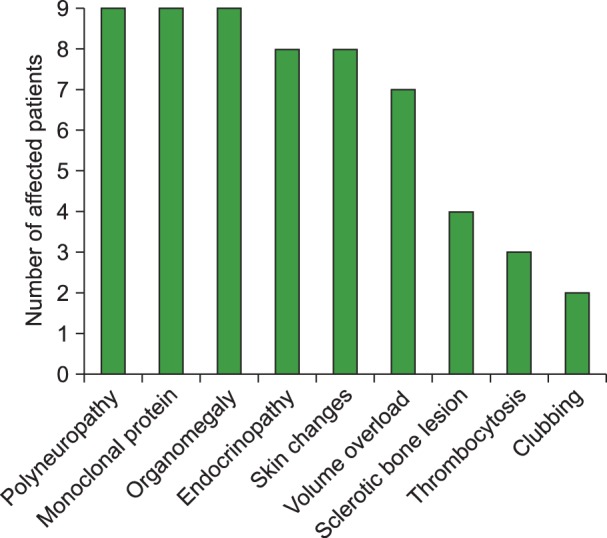
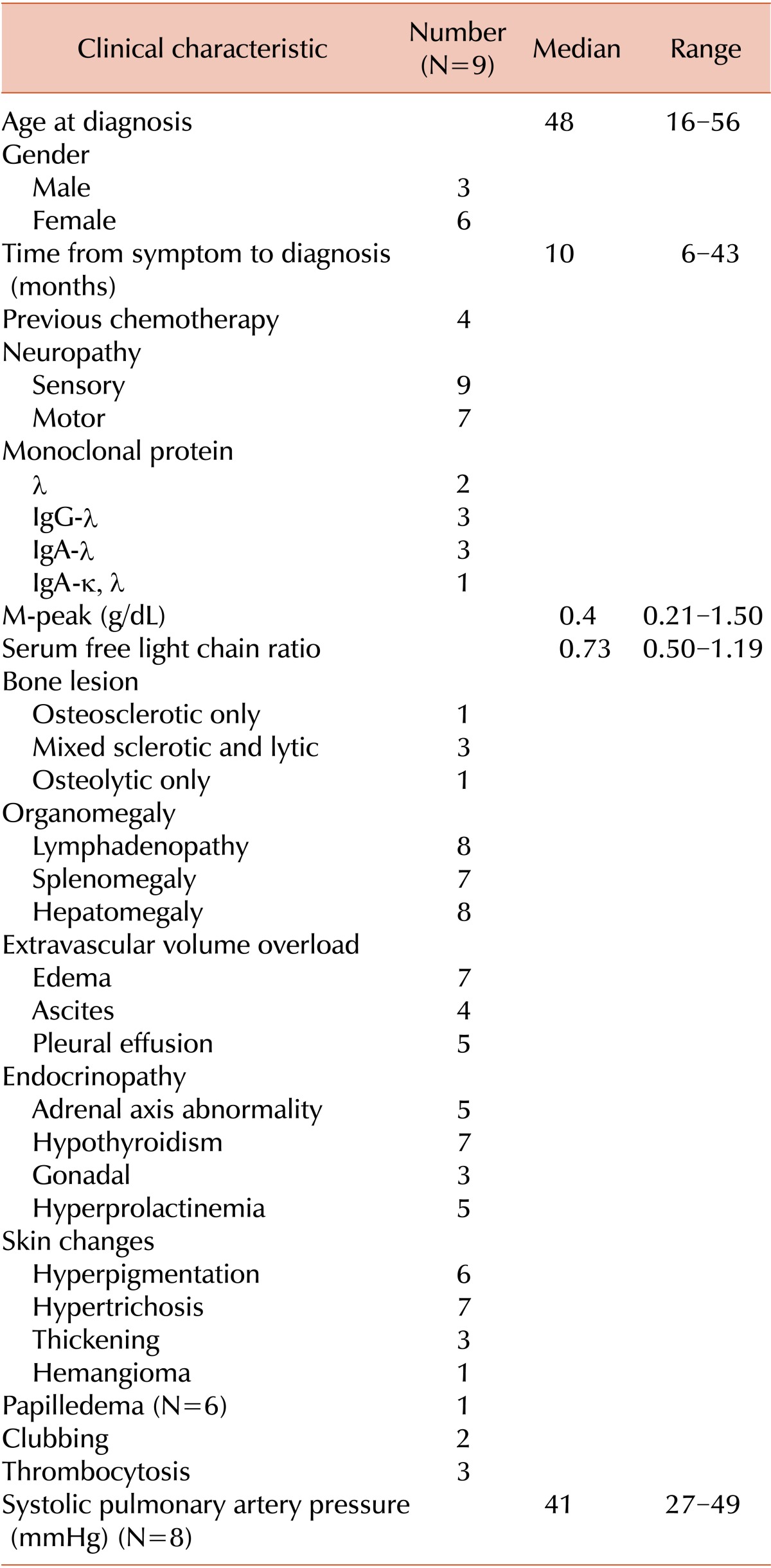
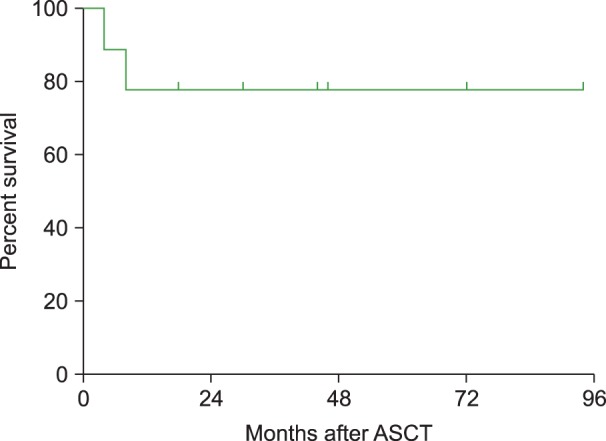
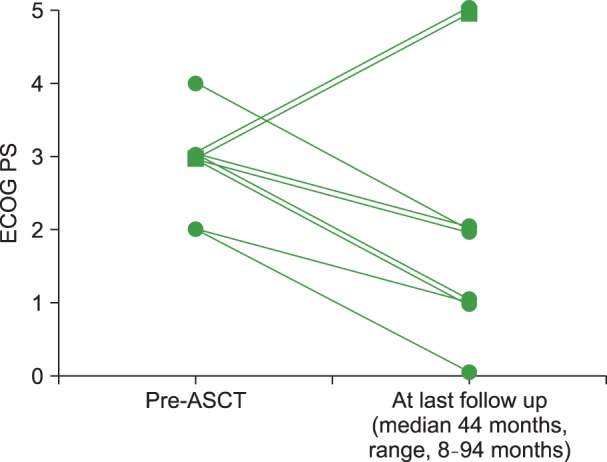
 XML Download
XML Download